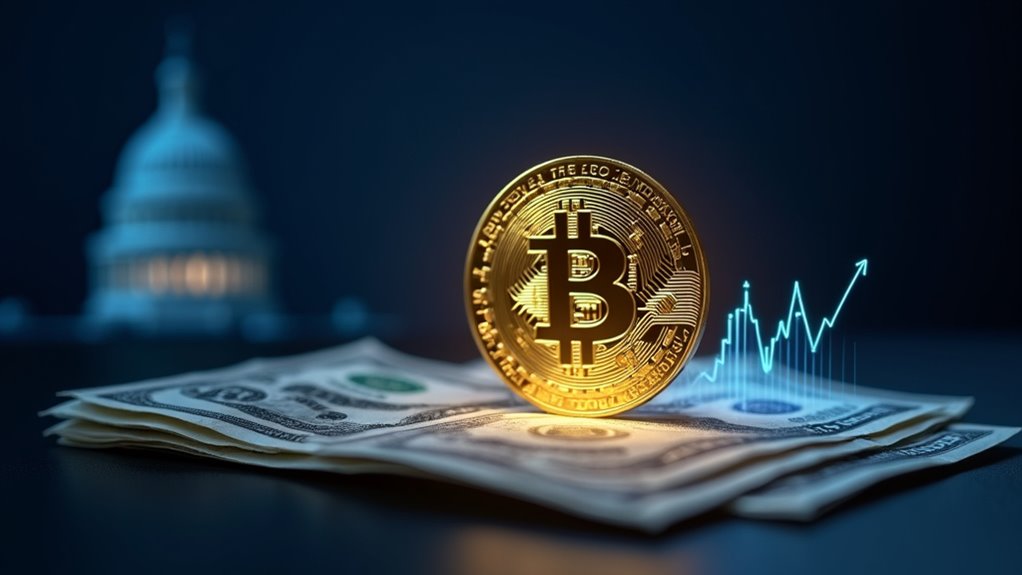As the United States faces the formidable challenge of refinancing $14 trillion in government debt over the next three years, a novel financial instrument has emerged on the horizon: Bitcoin-Enhanced Treasury Bonds. These “BitBonds,” as they’re colloquially known, represent a striking marriage between the rock-solid reliability of Treasury securities and the wild frontier of cryptocurrency.
The concept, championed by entities like VanEck and the Bitcoin Policy Institute, proposes allocating a small portion—typically 10%—of bond proceeds to purchase Bitcoin. Similar to Shibarium’s quick transactions, these bonds aim to process investments efficiently.
Visionary financial architects propose a bold fusion—allocating 10% of traditional Treasury bonds to Bitcoin’s digital frontier.
Picture a traditional bond stripped of its stodgy suit and tie, now sporting a digital wallet in its breast pocket. The mechanics are straightforward: investors might purchase a $100 bond, with $90 functioning as a conventional Treasury and $10 converted to Bitcoin. At maturity, investors receive their principal plus whatever their Bitcoin allocation has grown into—potentially transforming a predictable investment into something with considerable upside.
For Uncle Sam, the appeal is crystal clear. The government could offer lower coupon rates—perhaps just 1% compared to the current 4.5%—saving billions in interest payments. A $100 billion issuance could save $13 billion in interest costs alone.
Meanwhile, investors stomach the reduced coupon rates in exchange for a lottery ticket that might pay off handsomely if Bitcoin continues its historical growth trajectory. The structure allows investors to benefit from Bitcoin gains until reaching a 4.5% yield-to-maturity, after which profits are shared with the government.
The proposal isn’t without thorns, however. Investors bear the full downside risk of the Bitcoin portion, and those low coupons look painfully meager should cryptocurrency prices flatline or tumble. Models suggest investors need Bitcoin to reach approximately $383,000 by 2035 just to break even on a 1% coupon BitBond.
This financial innovation stands at the crossroads of tradition and disruption. While some view it as a desperate gambit from a debt-burdened nation, others see a visionary approach to government finance—one that embraces rather than resists the digital asset revolution.
Either way, BitBonds represent a thought-provoking attempt to align mismatched incentives: a government seeking cheaper funding and investors hungry for inflation protection. The implementation was authorized by an executive order aimed at recognizing Bitcoin as a strategic reserve asset for the United States.









